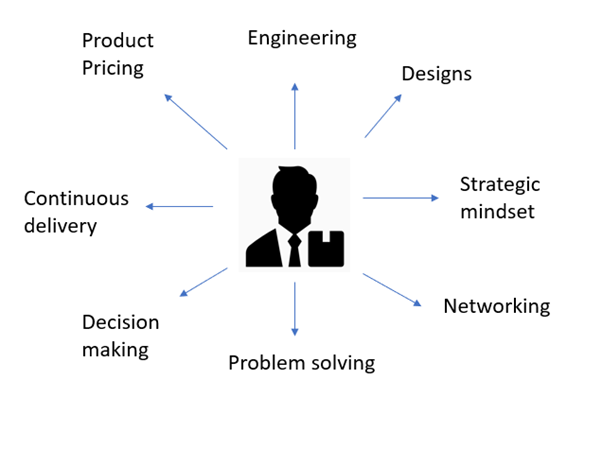Impact on cloud product management space for product innovation, flexibility, and cost
Clairvoyant has enabled several organizations to successfully migrate their technology stack onto the cloud. This blog discusses how the cloud is transforming the product management space from its vast expertise working on numerous cloud technologies.
Cloud computing is changing how products are designed. The 2019 State of the Cloud Report found that 94% of 786 IT professionals use the Cloud. Public cloud adoption is currently at 91%, while private cloud adoption is 72%. As these numbers show, cloud technology may be a necessity and not a luxury. Many companies are already leveraging the advantages that the cloud has to offer. If they haven’t already migrated to the cloud, many might do so in the near future.
How are product organizations changing?
With the advent of the cloud, information travels very fast in both directions, i.e. across computing systems with attributes like data virtualization, scaling up or down data infrastructure to handle large amounts of data workloads, or providing automated patching across hundreds of machines. The new system’s essential features are rapid data collection and analysis, followed by over-the-air changes to product software. This also means a more flexible work structure in the interest of products and services adjusted to anticipate customer needs.
The role of Product Manager and how the upcoming cloud technologies impact it
The key areas of Product management include elements of engineering, design, customer experience, business development. The product manager role demands specific skills leaning towards continuous learning, a strategic mindset, networking and problem-solving abilities, and good decision-making capabilities.
 Product Management areas of responsibility.
Product Management areas of responsibility.
Below are the areas where the cloud has affected the product management space:
1. Product design and customer experience
The cloud is a standard repository (place) for the analysis and gathering of data. Therefore, it enables companies to perform an increasing number of AI-related data operations, such as image or speech recognition. With the latest improvements in cloud technologies, it’s becoming comfortable and easy for companies to make products and services within the cloud, visualize new products, or create marketing campaigns as cloud-based software prototypes.
2. Create Decision Models for Prioritization
Cloud environments are optimized with Dev operation practices, such as continuous integration, continuous delivery, and continuous deployment. These processes have shorter feedback loops than the traditional deployment strategies and empower product managers to make more informed decisions by iterating on product features and prioritizing backlog items and new features.
Product managers should use the knowledge available from the automation tools to assess product quality and system health. Visualizing analytics and performing A/B testing helps you capture customer feedback quickly.
3. Product Innovation
The shift to the cloud is paving the way for innovation in product management as it acts as an enabler to test feature hypothesis and validate it by performing quick tests. It has also enabled shorter customer feedback to quickly empower product companies to operate and iterate on their feature development. Design thinking is another area where it has enabled and revolutionized the process. The concept of design thinking is based on the idea to understand, ideate, prototype, and evaluate.
Product Managers can take advantage of upcoming low-cost software in the cloud through prototyping, A/B test, and creating a Minimum Viable Product (MVP).
4. Enhance the relationship with customers
Cloud technologies provide additional communication channels, making customer engagement more fluid and immediate than the on-premises paradigm. The communication is more continuous in nature, and product managers can now talk to their customers and provide them solutions/resources such as user communities, self-service tools, and documentation libraries.
One of the key benefits for customers is that the cost of switching in-cloud is lower than the on-premise setup. Therefore, to provide the best user experience, product managers should constantly monitor customer expectations through continuous user feedback by analyzing usage and monitoring feedback.
5. Flexible Costs
Initially, many assumptions and considerations are made while designing a product. Any feature needs to consider the infrastructure while being designed. Gone are the times of annual budgets. Now they are only revisited the subsequent year. The infrastructure cost is not calculated by treating servers as a hard and fast price asset while modeling in depreciation. Now, you’ve got more flexibility in setting budgets.
The infrastructure capacity can automatically proportion up or down supported by demand and use. Your costs will scale alongside your user demands if you are doing it right. This suggests you’ll make a smaller initial infrastructure investment to check a replacement feature or approach. It rewards incremental and valuable approaches and encourages fast delivery to customers.
Product managers should include optimization items within the backlog, including automated reporting on usage, employing containers and microservice architecture, and actively monitoring non-production environments.
Conclusion
Cloud technologies have revolutionized product management across all domains and improved customer experience, innovation, delivery, and cost management. It has also paved the way for organizations to move ahead and be more dynamic and flexible in building a stronger relationship with their customer base.
Reach out to us at Clairvoyant to find the best Cloud IT solutions for your business.
